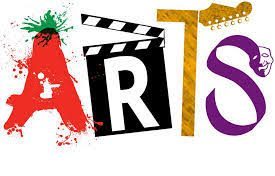Within integrated art this week we got to listen to Norwegian students and hear their experiences of teaching in a different country which led to incorporating a northern perspective on art within our inputs this week.
As our visual arts workshop in the afternoon was going to be outside we focused on the creation of an autumn piece of music. Looking at the season and linking to outdoor noises children could create their musical pieces through garage band.
Education Scotland (2017) emphasised the use of ICT as a method for learners to realise and enhance their compositions and also they can understand the processes of music at work.
Bloomfield also discussed the way “ICT provides children with many opportunities to access music-making, give rapid access to information and provides the individual with final results which look and sound good.” (Bloomfield, 2012 pp. 78)
I was intrigued and inquisitive as we learnt more about the resources, anxious with putting instruments and sounds together, not knowing how it would sound, and not being musical myself I was unsure. But using this technology I became more confident as the lesson progressed, gaining more trust in my skills.


Learning how it all works and comes together can be technically a little scary, however being able to compose and hear your work in action can be fun children. They become creative in the process and look at sounds they already relate to in their life. Using research skills and look at natural, autumn sounds, mixed with instruments, which they may not have heard before.
These creativity and problem-solving skills children develop as they make their own music creations are key in creating a well-rounded child able to perform confidently. (Russel-Bowie, 2009)
Within the visual arts workshop, as mentioned earlier we took our learning outside, becoming creative with the natural environment. Creating our land art showed a creative intervention in our learning world. It takes teachers out of the routinised system they get themselves into within the classroom. Artists such as Andy Goldsworthy are key to look at within this outdoor learning input.
“It is easier to enhance creativity by changing conditions in the environment than by trying to make people think more creatively.” (Alter, 2010, P. 4)
Being able to get the northern perspective on art from the morning, it was interesting to look at artic art. Exploring the way they use natural environments outside to create their art pieces. With the schools in Nordic countries design and creating art from the snow that has formed outside. An example of our outdoor teaching looks at the idea of season focus and how right now can focus upon the pedagogy of autumn. Creations are made with a positive and creative purpose and focus upon what we see every day at that time.


Nature provides an abundance of materials that can be used to identify multiple creative perspectives and activities. Children are intrigued and interested in the natural materials in front of them and enable their creativity to show through and grow. The outdoor world awakens you and allows changes in our focus and ideas. The fresh air can enable thinking, that may be within the classroom had faded, opening their eyes to the different ideas that can come from seeing material and their formations. This change of perspective can be used through cross-curricular learning with links being made to maths or climate change. Outdoor learning can also create new ideas from walking around areas or even just through talking you can identify new, good ideas. This can be linked and incorporated into our teaching and the children’s ways to learn.
Dissecting the depth and complexity of their work by identifying creative questions, making diverse observations and exploring multiple viewpoints as they use their creative thinking to process outdoor art. (Trishman, 2006)
Inspired by a range of stimuli, I can express and communicate my ideas, thoughts and feelings through activities within art and design.
EXA 0-05a / EXA 1-05a / EXA 2-05a
Working on my own and with others, I use my curiosity and imagination to solve design problems.
EXA 0-06a
(Scottish Government, 2017)
Linking our arts together, I can identify the ways in which our pedagogy can spread over the different areas of the curriculum. Within music and visual arts, we could explore the pedagogy of autumn and link in the outdoor learning that is at our fingertips, even within a classroom with technology. Linking our creativity outdoors to the sounds we hear, opens up our minds to the materials that can be used outside. We can create images outside and back these up with our musical, sound creations, combining two expressions of art into one. These can involve the kids in the technology of the computers or taking pictures of their creations and also to the materials they have sourced and process to a problem they have created. Expanding this further, their expressions of art can become a show or presentation on the theme of the season and visualises the way different forms of art can be integrated together to open up creative and inquiry skills within ourselves.
References
Scottish Government (n.d.) Curriculum for excellence: expressive arts. Experiences and Outcomes[Online] available: https://education.gov.scot/Documents/expressive-arts-eo.pdf [accessed: 25/10/2019]
Trishman, S., (2006) Artful thinking: Final Report.Harvard: Harvard graduate school of education
Alter, F., (2010) Using the Visual Arts to harness creativity[online] available: https://www.researchgate.net/publication/228811183_Using_the_Visual_Arts_to_harness_Creativity[accessed:25/10/2019]
Russell-Bowie, D. (2009) What me? Teach music to my primary class? Challenges to teaching music in primary schools in five countries Music education Research, Vol. 11(1) pp. 23-36


